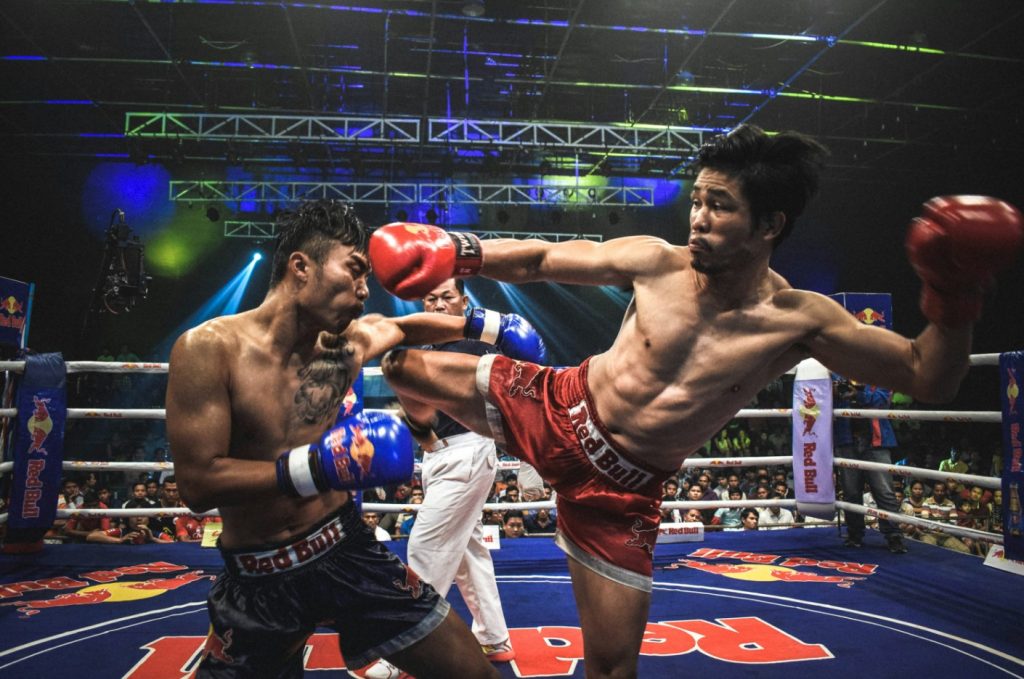Muay Thai, often referred to as “The Art of Eight Limbs,” is a traditional martial art from Thailand that utilizes fists, elbows, knees, and shins. Revered both as a cultural heritage and a modern combat sport, Muay Thai has deep historical roots, blending the history of a nation with the development of one of the world’s most respected fighting styles. But when exactly did Muay Thai start, and how did it evolve into what it is today?
Table of Contents
1. Early Origins: Before the 13th Century
The exact origins of Muay Thai are difficult to trace due to the destruction of historical records, particularly during the Burmese invasion of Ayutthaya in 1767. However, it is widely believed that the art evolved from older combat systems practiced by the Thai people, particularly Muay Boran (meaning “ancient boxing”).
Muay Boran itself developed from ancient battlefield tactics. Soldiers of the Siamese kingdom trained in hand-to-hand combat techniques as part of their military preparation.
Early Influences on Muay Thai
| Period | Key Influence | Description |
|---|---|---|
| Pre-13th Century | Tribal Warfare Combat Systems | Hand-to-hand combat used in warfare by Tai tribes migrating from southern China. |
| Sukhothai Kingdom (1238–1438) | Formalization of Military Training | Combat arts begin to be documented and taught systematically. |
| Ayutthaya Kingdom (1351–1767) | Rise of Muay Boran | Fighters trained both for war and public entertainment. |
2. The Ayutthaya Period (1351–1767): Muay Thai in Royal Courts
During the Ayutthaya Kingdom, Muay Thai (or Muay Boran, as it was called then) gained popularity not only as a method of combat but also as a sporting activity and royal entertainment. Thai kings encouraged their soldiers to train in this fighting style, and Muay Thai became part of military drills.
One of the most revered legends from this time is that of Nai Khanom Tom, a Thai prisoner of war who fought and defeated ten Burmese boxers in 1774. His victory is considered symbolic of Thai spirit and resilience, and March 17 is now celebrated as “Muay Thai Day” in his honor.
3. Rattanakosin Period (1782–1932): Sport and Structure
As the Thai nation stabilized during the Rattanakosin era, Muay Thai transitioned more from a battlefield skill to a popular sport. The sport started adopting more rules, and fighters began wearing ropes (Kaad Chuek) around their fists instead of bare hands.
Table 2: Muay Thai’s Evolution into a Sport
| Event/Period | Development |
|---|---|
| 19th Century | Use of Kaad Chuek (ropes) in matches |
| Reign of King Rama V | National tournaments held, training became more formal |
| 1920s–1930s | Introduction of rings and referees |
4. The 20th Century: Modernization and Globalization
Muay Thai entered a modern phase in the early 20th century. It began to resemble what we now recognize as the sport version of Muay Thai.
Key Milestones in Modern Muay Thai:
- 1920s–1930s: Western-style boxing gloves and boxing rings were introduced.
- 1930s: Muay Thai became a regulated sport, with weight classes, rules, and referees.
- 1950s–1970s: Muay Thai gained massive popularity in Thailand. Stadiums like Lumpinee and Rajadamnern became cultural landmarks.
- 1980s–1990s: The sport began gaining international attention as foreign fighters started training and competing in Thailand.
Table 3: Rules and Structure Introduced
| Year | Development |
|---|---|
| 1937 | Weight classes and official rules established |
| 1956 | Lumpinee Stadium established |
| 1972 | Rajadamnern Stadium national events televised |
| 1990s | International Muay Thai associations founded |
5. 21st Century: Muay Thai on the World Stage
Today, Muay Thai is recognized as both a professional combat sport and a cultural heritage of Thailand. In 2016, Muay Thai was provisionally recognized by the International Olympic Committee (IOC), and in 2021 it received full recognition, paving the way for future Olympic inclusion.
Globally, the International Federation of Muaythai Associations (IFMA) governs the sport, organizing world championships and promoting amateur Muay Thai worldwide.
Table 4: Global Expansion
| Organization | Role |
|---|---|
| IFMA (International Federation of Muaythai Associations) | Oversees amateur competition globally |
| WMC (World Muaythai Council) | Governs professional Muay Thai |
| IOC Recognition (2021) | Muay Thai granted full Olympic sport status |
6. Cultural Significance and Modern Impact
Beyond the ring, Muay Thai has become a symbol of Thai identity. Tourists travel to Thailand to train, fighters from all over the world adopt Thai methods, and Muay Thai influences other combat sports like MMA.
In Thai culture, it remains a rite of passage for young men, especially in rural areas, where it can offer a path to fame or a better life.
Muay Thai began centuries ago as a battlefield skill and has evolved into a globally recognized combat sport. From its ancient roots in the Ayutthaya Kingdom to its modern-day presence on the Olympic stage, Muay Thai’s journey reflects the resilience, artistry, and cultural richness of Thailand. Its evolution is not just the story of a sport but a mirror of a nation’s history, struggle, and spirit.

